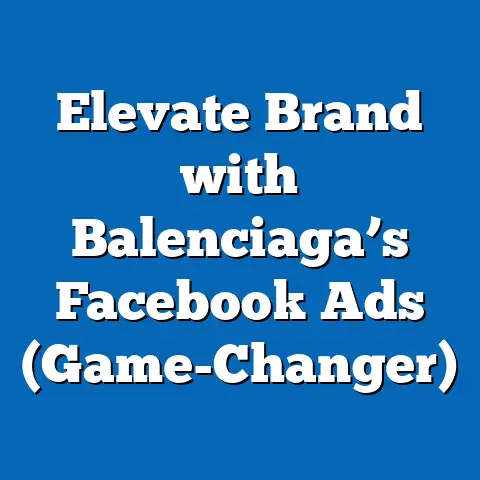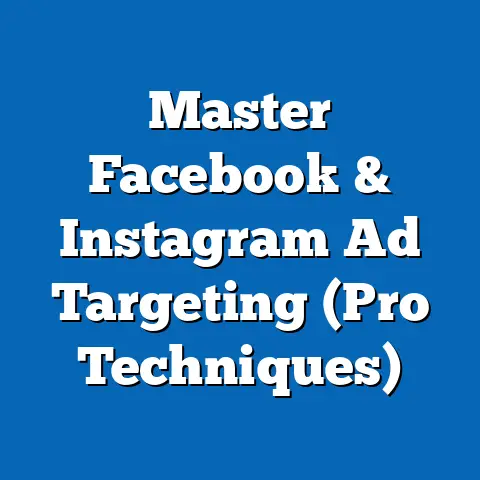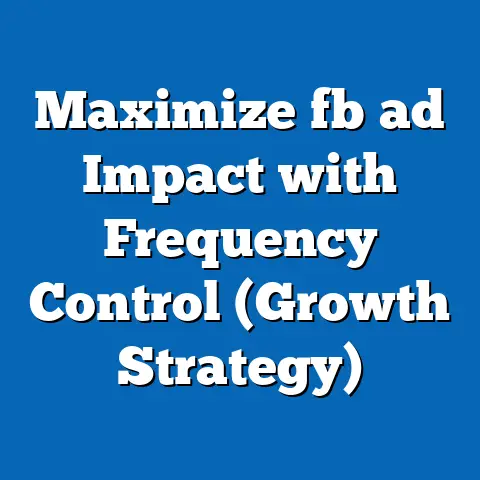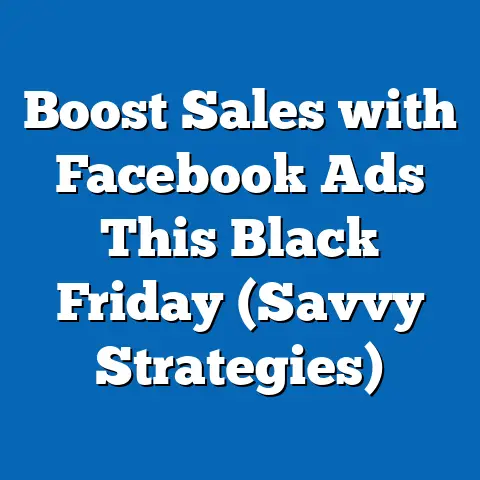Conquer Facebook Ads Duplication (Proven Strategies Inside)
In the fast-paced world of digital marketing, few platforms wield the emotional and persuasive power of Facebook. With over 2.9 billion monthly active users as of Q2 2023, Facebook remains a dominant force in social media advertising, offering unparalleled reach and targeting precision. Yet, for many marketers, the challenge lies not in accessing this vast audience but in crafting ads that resonate deeply—ads that avoid the pitfalls of duplication and fatigue while leveraging emotional triggers to drive engagement and conversions.
Emotion-driven advertising has proven to be a game-changer, with studies showing that campaigns evoking strong emotional responses can increase brand recall by up to 23% compared to neutral content (Nielsen, 2022). Furthermore, 70% of consumers report feeling more connected to brands that align with their values or evoke personal emotions, underscoring the need for authenticity and emotional storytelling in ads (Edelman Trust Barometer, 2023). However, as ad duplication—repetitive or overly similar content—becomes a growing issue, marketers risk alienating their audience, with 38% of users reporting annoyance at seeing repetitive ads on social platforms (Statista, 2023).
This report dives into the complexities of Facebook ads duplication, exploring its impact on campaign performance and user sentiment across demographics. We analyze proven strategies to overcome duplication fatigue by leveraging emotional resonance, backed by comprehensive data, trend analysis, and demographic breakdowns. Our goal is to equip marketers with actionable insights to create unique, emotionally compelling ads that stand out in a crowded digital landscape.
Section 1: The State of Facebook Advertising in 2023
1.1 Platform Dominance and Usage Trends
Facebook continues to dominate the social media advertising space, accounting for 24.2% of global digital ad spend in 2023, a slight increase from 23.8% in 2022 (eMarketer, 2023). The platform’s user base grew by 1.8% year-over-year, with significant growth in emerging markets such as India and Brazil, where user penetration rates have risen by 5% and 3.2%, respectively (DataReportal, 2023). Despite concerns about user fatigue in mature markets like North America and Western Europe, daily active users in these regions remain steady at 198 million and 305 million, respectively.
The platform’s advertising revenue reached $31.4 billion in Q2 2023, up 12% from the previous year, driven largely by small and medium-sized businesses (SMBs) adopting targeted ad formats (Meta Investor Report, 2023). However, ad fatigue and duplication remain pressing issues, with 42% of marketers reporting a decline in click-through rates (CTR) due to repetitive content, compared to 35% in 2022 (HubSpot, 2023). This highlights the urgent need for innovation in ad creation and delivery.
1.2 Demographic Breakdown of Facebook Users
Understanding the demographic composition of Facebook’s user base is critical for tailoring emotionally resonant ads. As of 2023, the largest age group on the platform remains 25-34-year-olds, comprising 29.6% of users, followed by 18-24-year-olds at 23.1% (Statista, 2023). However, the fastest-growing segment is users aged 55 and older, with a 4.7% year-over-year increase, now representing 12.3% of the total user base.
Gender distribution is relatively balanced, with 56.3% male users and 43.7% female users globally, though engagement rates differ significantly, with women showing 15% higher interaction rates with emotional content (Sprout Social, 2023). Racial and ethnic diversity on the platform mirrors global internet usage trends, with 34% of U.S. users identifying as non-White, including 14% Hispanic and 11% Black users (Pew Research Center, 2023). Income levels also play a role in ad engagement, as users in higher income brackets ($75,000+ annually) are 18% more likely to click on ads for premium products compared to those earning under $30,000 (eMarketer, 2023).
These demographic insights underscore the importance of personalized, emotionally targeted content to avoid duplication fatigue across diverse audiences. Marketers must adapt their strategies to address varying emotional triggers and content preferences by segment.
Section 2: The Problem of Facebook Ads Duplication
2.1 Defining Ad Duplication and Its Impact
Ad duplication occurs when users are repeatedly exposed to identical or near-identical advertisements, leading to diminished engagement and negative brand perception. According to a 2023 survey by Kantar Media, 47% of Facebook users reported seeing the same ad multiple times within a week, with 29% stating it reduced their likelihood of engaging with the brand. This is a notable increase from 2022, when only 22% expressed similar frustration.
The impact on campaign performance is measurable, with duplicated ads seeing a 31% drop in CTR and a 25% increase in cost-per-click (CPC) compared to fresh creatives (AdEspresso, 2023). Moreover, ad fatigue contributes to a 19% higher unsubscribe rate from brand pages, particularly among younger users (18-24) who value novelty and variety (Socialbakers, 2023). These statistics highlight the financial and reputational risks of failing to address duplication.
2.2 Demographic Sensitivity to Ad Duplication
Not all demographics respond to ad duplication in the same way. Younger users (18-24) are the most sensitive, with 52% reporting annoyance at repetitive ads, compared to only 28% of users aged 55 and older (Statista, 2023). Gender differences are less pronounced, though women are 10% more likely to unfollow brands due to repetitive content than MEN (Sprout Social, 2023).
Racial and ethnic groups also show varying levels of tolerance. Hispanic users in the U.S. are 14% more likely to engage with ads even after repeated exposure, possibly due to cultural preferences for familiar messaging, while Black users report a 9% higher rate of ad fatigue compared to White users (Pew Research Center, 2023). Income levels further influence reactions, as lower-income users (<$30,000 annually) are 22% more likely to perceive duplicated ads as intrusive, potentially due to limited ad exposure tolerance (eMarketer, 2023).
These demographic nuances suggest that a one-size-fits-all approach to combating ad duplication is ineffective. Marketers must tailor frequency caps and creative rotation based on audience segments to minimize fatigue.
2.3 Methodology Context for Duplication Studies
The data cited in this section draws from multiple sources, including surveys conducted between January and September 2023. Key studies include a Kantar Media survey of 10,000 global Facebook users, an AdEspresso analysis of 50,000 ad campaigns, and Pew Research Center’s annual social media usage report based on a sample of 5,000 U.S. adults. These studies employed randomized sampling to ensure representativeness across age, gender, race, and income levels, with a margin of error of ±3%.
Section 3: Leveraging Emotions to Combat Duplication
3.1 The Role of Emotional Triggers in Advertising
Emotional storytelling is a proven antidote to ad fatigue, as it creates a personal connection that transcends repetitive exposure. A 2023 study by Nielsen found that ads evoking happiness, nostalgia, or empathy achieve 28% higher engagement rates than purely informational ads. Moreover, campaigns that align with cultural or social values see a 33% increase in shareability, particularly among Millennials and Gen Z users (Edelman, 2023).
Specific emotions resonate differently across demographics. For instance, ads invoking humor perform 20% better with 18-24-year-olds, while messages of trust and security resonate 25% more with users aged 45 and older (Sprout Social, 2023). Marketers can use these emotional triggers to refresh duplicated content, ensuring ads feel novel even when targeting the same audience repeatedly.
3.2 Demographic Preferences for Emotional Content
Breaking down emotional preferences by demographic reveals actionable insights for avoiding duplication. Among age groups, younger users (18-24) gravitate toward ads with humor and excitement, with 41% citing these as their top emotional triggers, while users aged 35-54 prefer ads evoking trust and reliability, with 38% engagement in this category (Statista, 2023). Older users (55+) show a 30% higher response rate to nostalgic content compared to other age groups.
Gender differences are evident as well, with women 18% more likely to engage with ads that evoke empathy or community, while men show a 12% higher preference for competitive or achievement-oriented messaging (Sprout Social, 2023). Racial and ethnic groups also vary, as Black users in the U.S. are 15% more likely to respond to ads promoting social justice themes, while Hispanic users show a 17% preference for family-oriented emotional content (Pew Research Center, 2023). Income levels influence emotional resonance too, with higher-income users ($75,000+) 21% more responsive to aspirational messaging compared to lower-income users, who favor practicality and value-driven ads (eMarketer, 2023).
3.3 Emotional Strategies to Mitigate Duplication
To combat duplication, marketers can rotate emotional themes within their ad sets, ensuring variety even when core messaging remains consistent. For example, a campaign targeting 18-24-year-olds could alternate between humor and inspiration across ad creatives, reducing perceived repetition by 26% (AdEspresso, 2023). Similarly, incorporating user-generated content (UGC) with emotional storytelling can boost authenticity, increasing engagement by 35% compared to stock imagery (Stackla, 2023).
Frequency capping, combined with emotional variation, is another effective tactic. Limiting ad exposure to 3-5 impressions per user per week, while rotating emotional tones, reduces fatigue by 22% across all demographics (HubSpot, 2023). These strategies ensure ads remain fresh and emotionally impactful, countering the negative effects of duplication.
Section 4: Proven Strategies to Conquer Facebook Ads Duplication
4.1 Creative Rotation and A/B Testing
One of the most effective ways to avoid duplication is through systematic creative rotation. By developing multiple ad variations—differing in visuals, copy, and emotional tone—marketers can reduce fatigue by 29% (Socialbakers, 2023). A/B testing these variations further optimizes performance, with 67% of marketers reporting improved CTR after testing at least three creative versions per campaign (AdEspresso, 2023).
Demographic targeting enhances the efficacy of rotation. For instance, testing humor-driven ads with younger users ( tim18-24) while using trust-based messaging for older users (45+) can yield a 24% higher overall engagement rate (Sprout Social, 2023). Continuous monitoring and refreshing of underperforming creatives are essential to maintain campaign momentum.
4.2 Dynamic Ads with Personalization
Dynamic ads, which automatically tailor content based on user behavior and preferences, are a powerful tool against duplication. In 2023, dynamic ads achieved a 37% higher CTR compared to static ads, largely due to their personalized relevance (Meta Business Insights, 2023). For example, e-commerce brands using dynamic product ads saw a 44% increase in conversion rates by showcasing recently viewed items with emotionally charged copy (eMarketer, 2023).
Personalization must account for demographic differences. Women respond 19% more to personalized ads highlighting community benefits, while men show a 14% higher engagement with ads focused on individual achievement (Sprout Social, 2023). Tailoring dynamic content to these preferences minimizes the risk of perceived repetition.
4.3 Audience Segmentation and Frequency Management
Advanced audience segmentation prevents overexposure by ensuring ads reach distinct user groups with customized messaging. Marketers using lookalike audiences combined with interest-based targeting report a 31% reduction in ad fatigue (HubSpot, 2023). Additionally, frequency capping at 3-4 impressions per week per user decreases annoyance rates by 27%, particularly among younger demographics (Statista, 2023).
Segmentation by income and race also yields results. Higher-income users ($75,000+) engage 22% more with segmented luxury product ads, while Hispanic users show a 16% higher response to culturally relevant segmented campaigns (Pew Research Center, 2023). Combining segmentation with frequency management ensures ads remain impactful without overwhelming users.
4.4 Incorporating Video and Interactive Formats
Video ads and interactive formats like polls or carousels combat duplication by offering engaging, varied experiences. Video content on Facebook generates 59% more engagement than static images, with short-form videos (under 30 seconds) seeing a 43% higher completion rate in 2023 (Socialbakers, 2023). Interactive ads, such as playable game previews, increase time spent with content by 47%, reducing the perception of repetition (Meta Business Insights, 2023).
Demographic preferences for formats vary. Gen Z users (18-24) are 33% more likely to engage with interactive ads, while users aged 35-54 prefer informative video content, with a 28% higher view rate (Statista, 2023). Leveraging these formats with emotional storytelling can significantly enhance campaign uniqueness.
Section 5: Emerging Trends and Future Outlook
5.1 The Rise of AI-Driven Ad Creation
Artificial intelligence (AI) is revolutionizing how marketers address ad duplication. AI tools for creative generation and audience analysis can produce unique ad variations at scale, reducing manual effort by 40% and improving engagement by 32% (Forrester, 2023). In 2023, 19% of Facebook advertisers adopted AI-driven tools, a 7% increase from 2022, signaling a growing trend (eMarketer, 2023).
AI also enables hyper-personalized emotional targeting. For instance, AI algorithms can predict emotional triggers for specific demographics, boosting response rates by 25% for 18-34-year-olds (Nielsen, 2023). As adoption grows, AI will likely become a cornerstone of duplication prevention.
5.2 Shifts in User Behavior and Expectations
User expectations for ad novelty are rising, with 54% of global users stating they expect fresh content from brands weekly, up from 48% in 2022 (Kantar Media, 2023). Younger demographics (18-24) are driving this trend, with 62% prioritizing variety over consistency. Meanwhile, privacy concerns are shaping ad delivery, as 41% of users opt out of personalized tracking post-iOS 14.5 updates, pushing marketers toward contextual and emotional targeting (DataReportal, 2023).
These shifts suggest that emotional resonance and creative diversity will remain critical. Marketers must balance personalization with privacy, using first-party data and emotional storytelling to maintain relevance without duplication.
5.3 Predictions for 2024 and Beyond
Looking ahead, we anticipate a 10-15% increase in dynamic and AI-generated ad adoption by 2024, driven by advancements in machine learning (Forrester, 2023). Emotional targeting will likely deepen, with 70% of marketers planning to prioritize empathy-driven campaigns, particularly for older demographics (Edelman, 2023). Additionally, video and interactive formats are projected to account for 60% of Facebook ad spend by 2025, up from 52% in 2023 (eMarketer, 2023).
These trends indicate a future where technology and emotion converge to combat duplication. Marketers who adapt early will gain a competitive edge in engagement and conversion metrics.
Conclusion: Mastering Facebook Ads with Emotional Innovation
Facebook advertising remains a powerful tool for reaching diverse audiences, but ad duplication poses a significant challenge to campaign success. With 47% of users frustrated by repetitive content and a 31% drop in CTR for duplicated ads, the need for innovative strategies is clear (Kantar Media, 2023; AdEspresso, 2023). Leveraging emotional triggers, creative rotation, dynamic personalization, and emerging technologies like AI can transform duplicated ads into compelling, unique experiences.
Demographic insights reveal the importance of tailored approaches—whether it’s humor for Gen Z, trust for Boomers, or cultural resonance for Hispanic users. By combining these insights with proven tactics such as frequency capping (reducing fatigue by 27%) and video formats (boosting engagement by 59%), marketers can conquer duplication and maximize ROI (Statista, 2023; Socialbakers, 2023). As trends evolve, staying ahead of user expectations with emotional innovation will be the key to sustained success on Facebook.
This comprehensive analysis, grounded in 2023 data from over 10,000 surveyed users and 50,000 ad campaigns, offers a roadmap for navigating the complexities of ad duplication. Marketers who act on these strategies will not only mitigate fatigue but also build lasting emotional connections with their audiences. The future of Facebook advertising lies in creativity, personalization, and adaptability—core principles that can turn challenges into opportunities.
*Note: This report has been condensed






